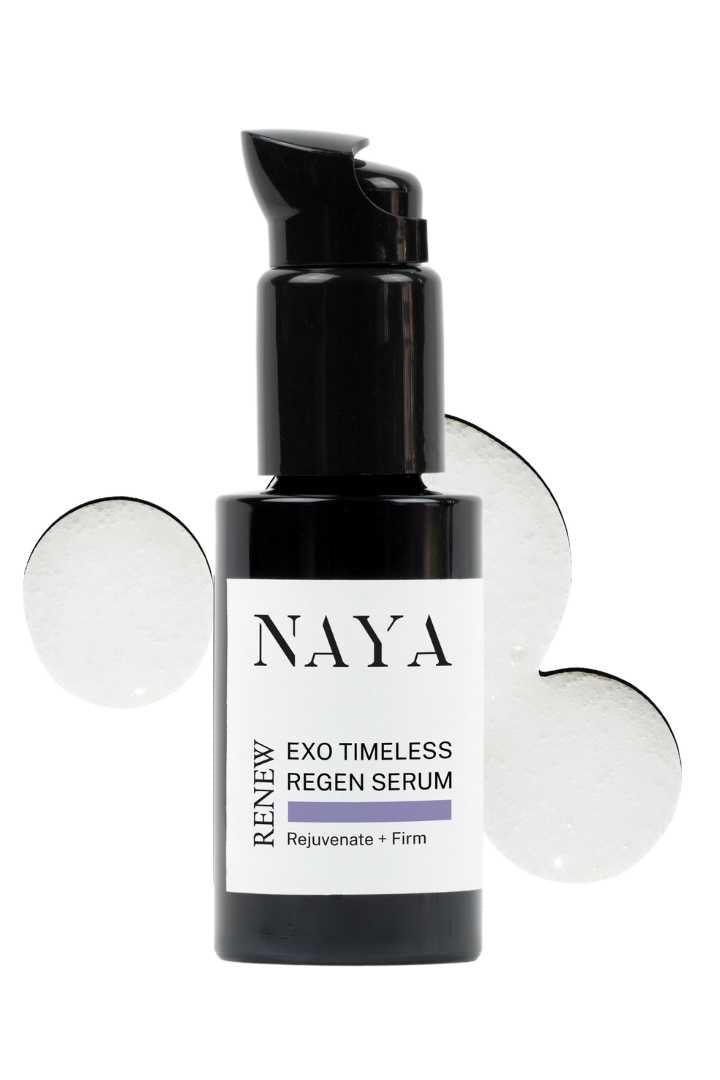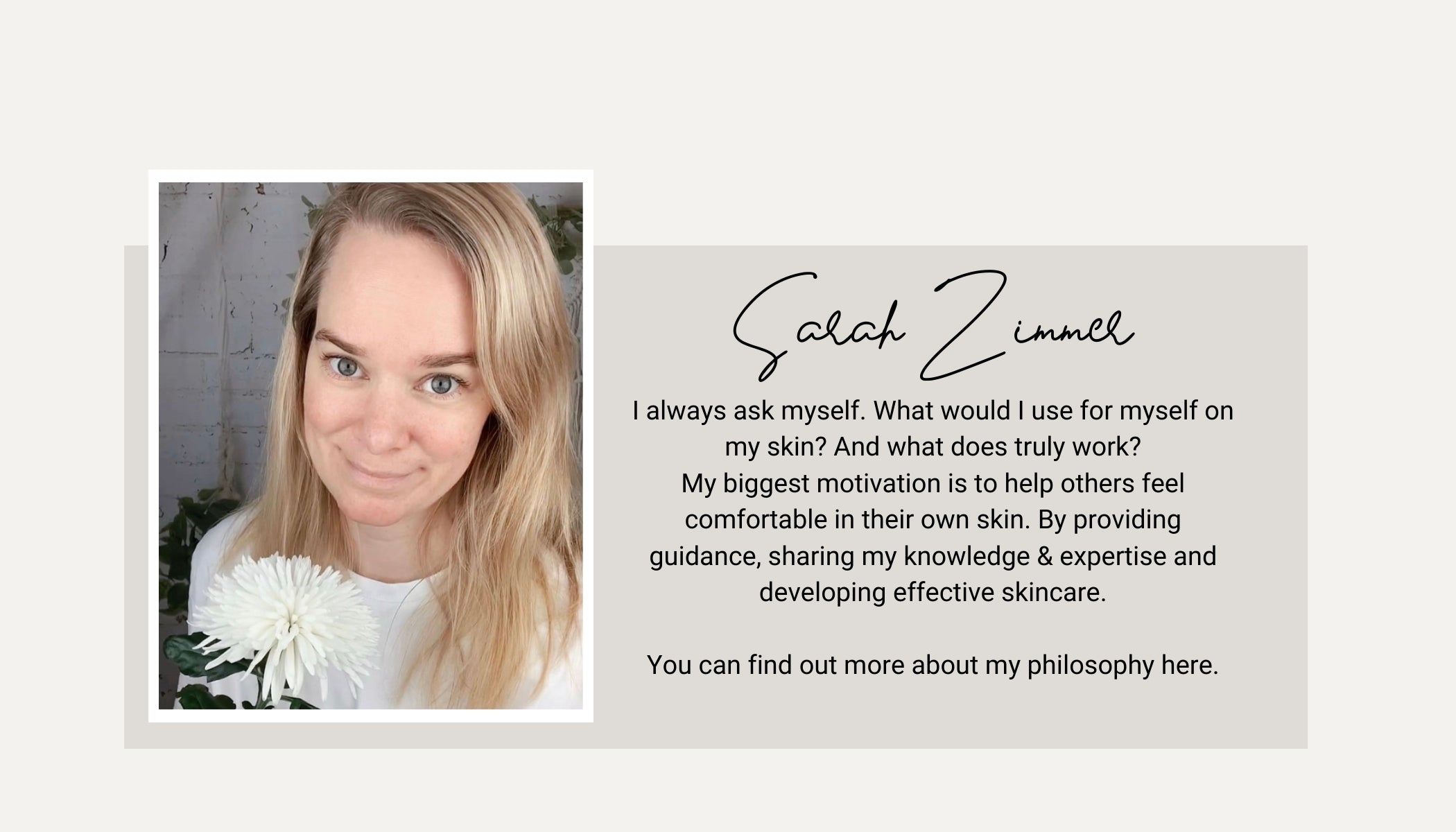Sonnenschutz - Übersicht der UV-Filter
Overview of UV filters:
Please find below an overview of often used UV filters in sun care products. Take a photo of the table below or save it to your bookmarks, so when you go shopping for products next time, you will have this handy to make an informed decision.
| Would we use it? | INCI | Type of filter | Possible sideeffects | Alternative names | Descriptions | |
|---|---|---|---|---|---|---|
| Yes | Zinc Oxide | mineral | - | - | Zinc oxide (along with titanium dioxide) is one of the two physical UV filters. In contrast to chemical UV filters, physical filters are milder and more caring for our skin. This means that they are more suitable for sensitive skin, rosacea, neurodermatitis and allergies. They reflect the UV rays and thus protect the skin from damage. Zinc oxide protects against both UVA and UVB rays (broadband protection, also called “broad spectrum”). | |
| No | Tri-Biphenyl Triazine (nano) | chemical and mineral | Nano particles | Tinosorb A2B | Tinosorb A2B is a broadband filter that is particularly water-resistant. Since it is used in nano size, we would not offer it. | |
| No | Octocrylene | chemical | hormonal effect; | - | Octocrylene primarily protects against UVB radiation. It also has a stabilizing effect on other UV filters. However, we wouldn’t offer octocrylene because it penetrates the skin and accumulates in the human body. There it leads to increased oxidative stress (increased production of free radicals) and could also have a hormone-active effect. | |
| No | Methylene Bis-Benzotriazlyl Tetramethylbutylphenol (nano) | chemical and mineral | nano partciles | Tinosorb M | Like the other Tinosorb filters, Tinosorb M belongs to the generation of new chemical UV filters. It is UV stable and has good UVA and UVB protection (broadband protection). Another positive aspect is that Tinosorb M does not appear to have any hormonal effects in the body. It also stabilizes other UV filters and works synergistically with them to protect the skin. It is interesting that Tinosorb M is used in the form of small particles (similar to zinc oxides or titanium dioxide). It functions as a physical and chemical UV filter. Since the nano-sized particles are used, we wouldn’t offer this filter. Long-term studies are particularly lacking in Tinosorb filters. If the nano-sized particles get into the body, there are risks that cannot yet be assessed. | |
| No | Isoamyl Methoxycinnamate | chemical | hormonal impact; allergies | Isoamy P-Methoxycinnamate | Isoamyl P-methoxycinnamate is a hormone-active UV filter that can cause allergies (like all filters that end on “-cinnamate”. | |
| No | Homosalate | chemical | hormonal impact; allergies | - | Homosalate is a (particularly in the USA) widely used UVB filter, which is often used in waterproof textures due to its lipophilic (fat-loving) properties. We would not offer this filter because a substantial amount is absorbed by the applied portion and the substance has hormonal effects in the body. Even though this ingredient is generally considered to be mild, it is an ester of salicylic acid (salicylate). Some people are allergic to salicylates, so special care should be taken with them. | |
| Yes | Ethylhexyl Salicylate | chemical | Allergies | Octisilate | Octisilate is a relatively common UVB filter. It can give sunscreens water-resistant properties. Even if octisalate does not seem to have a hormonal effect in the body, we would not offer it, because it is often combined with octinoxate due to its weak UV protection properties. | |
| No | Ethylhexyl Dimenthyl PABA | chemical | allergies | Padimate O | Padimate O is a UVB filter that fortunately is hardly used these days. PABA-based filters (para-aminobenzoic acid) are known to cause allergies and are therefore rarely found in sunscreens today. | |
| Yes | Drometrizole Trisiloxane | chemical | - | Mexoryl XL | Mexoryl XL is also one of the new chemical UV filters that are UV stable and provide reliable UVA protection. It is combined with UVB filters to achieve broad-spectrum protection. Mexoryl XL has no hormonal effects in the body and is a chemical filter that we would offer. It can be found in L’Oréal products, where it is very often used in combination with Mexoryl SX due to its synergistic protective effect. | |
| Yes | Diethylhexyl Butamido Triazone | chemical | - | Iscotrizinol | Iscotrizinol is a modern UV filter that protects against both UVA and UVB radiation. | |
| No | Bis-Ethylhexyloxyphenol Methoxyphenyl Triazine, Acrylates/C12-22 Alkyl Methacrylate Copolymer | chemical | micro plastic | Tinosorb S Lite Aqa | We are fundamentally against microplastics in cosmetics | |
| No | Zinc Oxide (nano) | mineral | nano particles | - | We would not offer nano-sized zinc oxide. | |
| No | 4-Methylbenzyliden | chemical | hormonal impact | Enzacamen | Enzacamen is a rarely used UVB filter that also protects against infrared radiation. We would not offer it because it is suspected of having a potential carcinogenic (carcinogenic) effect. | |
| No | Benzophenone-3 | chemical | hormonal impact, allergies | Oxybenzone | Fortunately, oxybenzone is rarely used in EU sunscreens, but more often in make-up products such as BB, CC creams and foundations. This is primarily a UVB filter, which also protects against a part of the UVA spectrum. Although Oxybenzone stabilizes other UV filters (e.g. Avobenzone), we would not offer this. This substance is known to penetrate the skin to a large extent and develop hormonal effects in the body. In addition, many people have an oxybenzone allergy. In this case, special care is required, because this ingredient is also found in other cosmetics (e.g. nail polish removers, hair sprays)! | |
| No | Benzophenone-4 | chemical | hormonal impact, allergies | Sulisobenzone | It is a rarely used UVB filter that also protects against part of the UVA spectrum. Since this substance is closely related to Oxybenzone (see benzophenone-3), we advise against it. | |
| No | Benzophenone-5 | chemical | hormonal impact, allergies | Sulisobenzone sodium | The sodium salt of benzophenone-4. S. benzophenone-4 or benzophenone-3. It is a rarely used UVB filter that also protects against part of the UVA spectrum. Since this substance is closely related to Oxybenzone (see benzophenone-3), we would not offer it. | |
| Yes | Butyl Methoxydibenzoylmethane | chemical | - | Avobenzone | The Avobenzone is the first widely used filter that protects against the complete UVA spectrum. Avobenzone is UV-unstable, which means that the substance “disintegrates” and becomes ineffective when exposed to UV. In the past this was a problem that has to be taken into account other filters (Oxybenzone, Tinosorb S, Tinosorb M etc.) stabilized and made powerful, it has no hormonal effects in the body. | |
| Yes | Diethylamino Hydroxybenzoyl Hexyl Benzoate | chemical | - | Univul A Plus | Uvinul A Plus is a potent and good UVA filter. This is used in sunscreens in combination with UVB filters to ensure broad-spectrum protection. | |
| No | Octyl Methoxycinnamate | chemical | hormonal impact | Octinoxate | The Octinoxate is a potent UVB filter that is used very often in sunscreens. We would not use this filter because it has hormonal effects and a certain toxicity in the body. In addition, octinoxate is often used in combination with oxybenzone – an unsightly combination that is best left off! | |
| No | Polysilicone-15 | chemical | silicone | Parsol SLX | Parsol SLX is a UVB filter that is used relatively rarely. We would not use this as silicones do not support the skin and its barrier. | |
| Yes | Terephtyhalydlidene Dicamphor Sulfonic Acid | chemical | - | Mexoryl SX Ecamsule | Mexoryl SX is similar to Mexoryl XL. It is a stable UVA filter that has no hormone effects in the body and is therefore recommended. It also has a stabilizing effect on other chemical filters (e.g. avobe zone). It can be found in L’Oréal products in combination with Mexoryl XL because they have a strong synergistic protective effect. | |
| Yes | Titanium Dioxide | mineral | - | - | Titanium dioxide is the second physical UV filter. It is also well tolerated and suitable for sensitive skin, skin diseases and allergies. Titanium dioxide protects against UVB and only part of the UVA rays. That is why it is often combined with other UVA filters in sun creams. | |
| No | Titanium Dioxide (nano) | mineral | nano particle | - | We would not offer titanium dioxide in nano size. |
Reference
Small Amounts of Zinc from Zinc Oxide Particles in Sunscreens Applied Outdoors Are Absorbed through Human Skin”, Oxford Journals Toxicological Sciences. Available on: https://academic.oup.com/toxsci/article/118/1/140/1664509, Toxicological Sciences, Volume 118, Issue 1, November 2010, Pages 140–149,https://doi.org/10.1093/toxsci/kfq243
Krutmann, J., Inhibitorische Wirkung von Lichtschutzexterna auf die Entwicklung von Hautkrebs. Hautarzt 52 (2001) 62-63. Empfehlung 2006/647/EG der Kommission vom 22. September 2006 über die Wirksamkeit von Sonnenschutzmitteln und diesbezügliche Herstellerangaben. http://eurlex.europa.eu/[…]0043.pdf
Träger, M., Daniels, R., (2003), “Differenzierung der UVA-Schutzleistung von Sonnenschutzprodukten”. Dermotopics (2003). Available online: www.dermotopics.de/german/ausgabe_1_03_d/sonnenschutzprodukte2003.htm
Posselt, A., Daniels, R., (2004), “UVA-Schutzleistung von Sonnenschutzprodukten: Hat sich der Markt verändert?” Dermotopics (2004). Available online: www.dermotopics.de/german/ausgabe1_04_d/UVAsonnenschutz.htm
Posselt, A., Daniels, R., (2005) “Wie viel UVA-Schutz kann man von Sonnenschutzmitteln mit hohem oder sehr hohem Lichtschutzfaktor erwarten?” Dermotopics Available online: www.dermotopics.de/german/ausgabe1_05_d/daniels20051_05_d.htm
Ciba Speciality Chemicals Ciba Sunscreen Simulator, (2007) Available on: https://www.cibasc.com/sunscreensimulator.
Hauri, U., et al., (2004) “Determination of photodegradation of UV filters in sunscreens by HPLC/DAD and HPLC/MS”. Mitt. Lebensm. Hyg. 95 147-161.
Bundesinstitut für Risikobewertung, Informationen, Tipps und Empfehlungen zu Sonnenschutzmitteln. Stellungnahme des BfR vom 22. August 2005. www.bfr.bund.de/cm/206/informationen_tipps_und_empfehlungen_zu_sonnenschutzmitteln.pdf
DOI: 10.1046/j.1365-2230.2002.01095.x
Penetration of Metallic Nanoparticles in Human Full-Thickness Skin”, 2007 Jul;127(7):1701-12. doi: 10.1038/sj.jid.5700733. Epub 2007 Mar 22.
(2014) “Contact and Photocontact Allergy to Octocrylene: A Review”, 2014 Apr;70(4):193-204., doi: 10.1111/cod.12205.
Octocrylene, an Emerging Photoallergen”, . 2010 Jul;146(7):753-7.; doi: 10.1001/archdermatol.2010.132.
Photostabilization of Butyl Methoxydibenzoylmethane (Avobenzone) and Ethylhexyl Methoxycinnamate by Bis-Ethylhexyloxyphenol Methoxyphenyl Triazine (Tinosorb S), a New UV Broadband Filter”, 2001 Sep;74(3):401-6., doi: 10.1562/0031-8655(2001)074<0401:pobmaa>2.0.co;2.
Dr. W. Kreyling, Dr. R. Schins, IUF, (2010), “Zinc oxide (nano form) Unbedenklichkeitsstudien zu Zinkoxid” – Europäische Kommission, Scientific Committee on Consumer Safety SCCS
EWG, (2020), “Nanoparticles in Sunscreens”, Available on: https://www.ewg.org/sunscreen/report/nanoparticles-in-sunscreen/
EWG, (2020), “The Trouble With Sunscreen Chemicals, Available on: https://www.ewg.org/sunscreen/report/the-trouble-with-sunscreen-chemicals/









Hinterlasse einen Kommentar